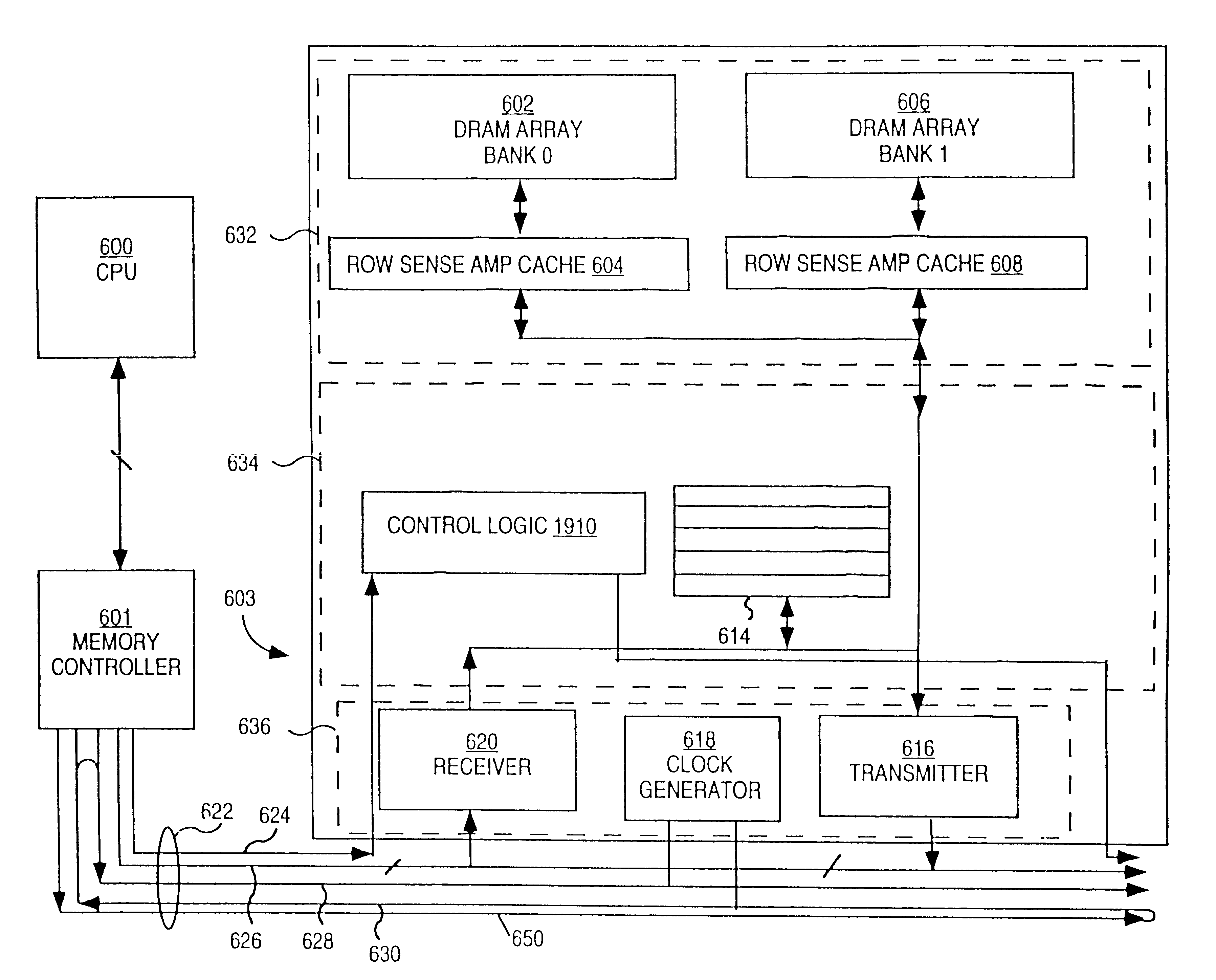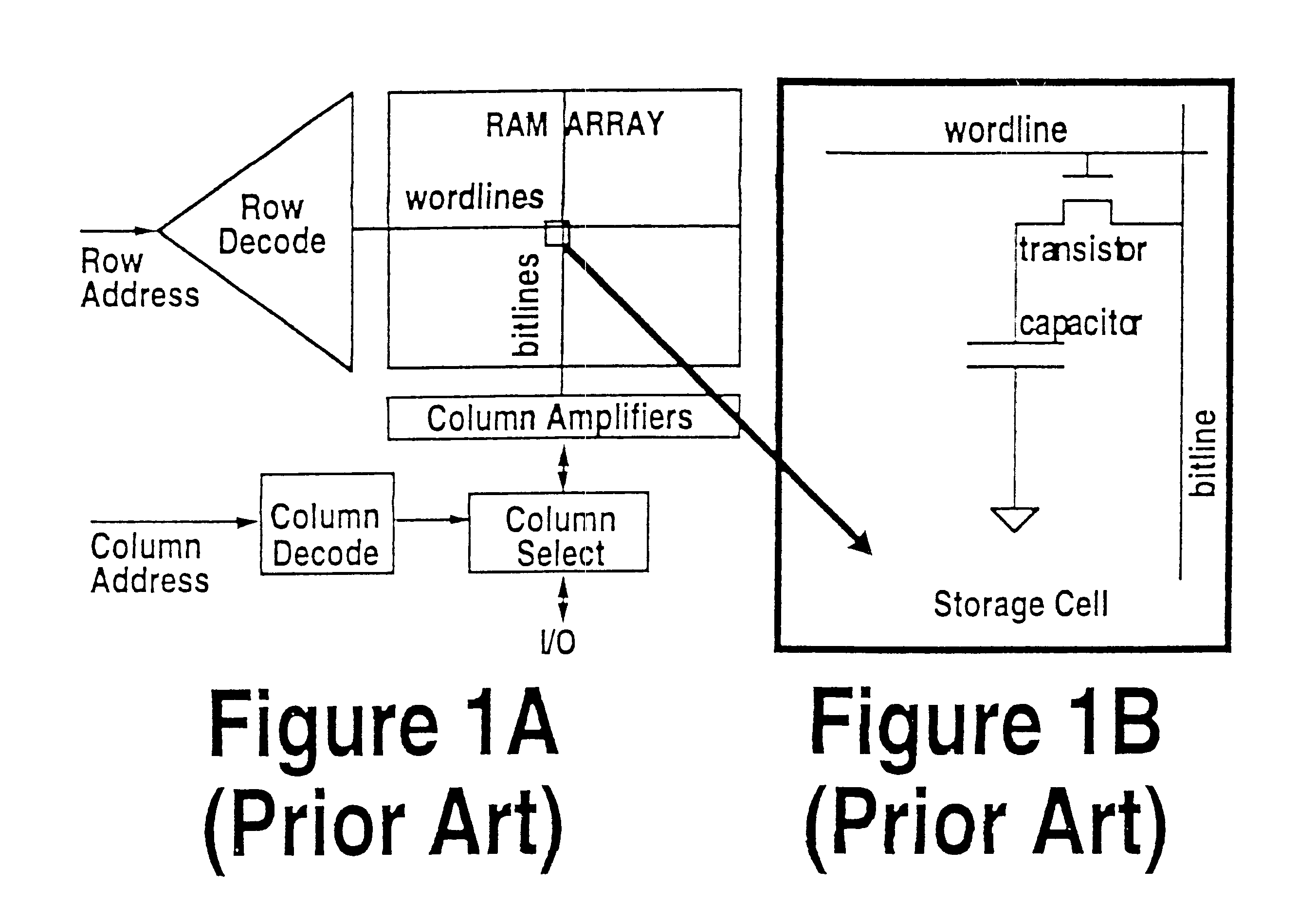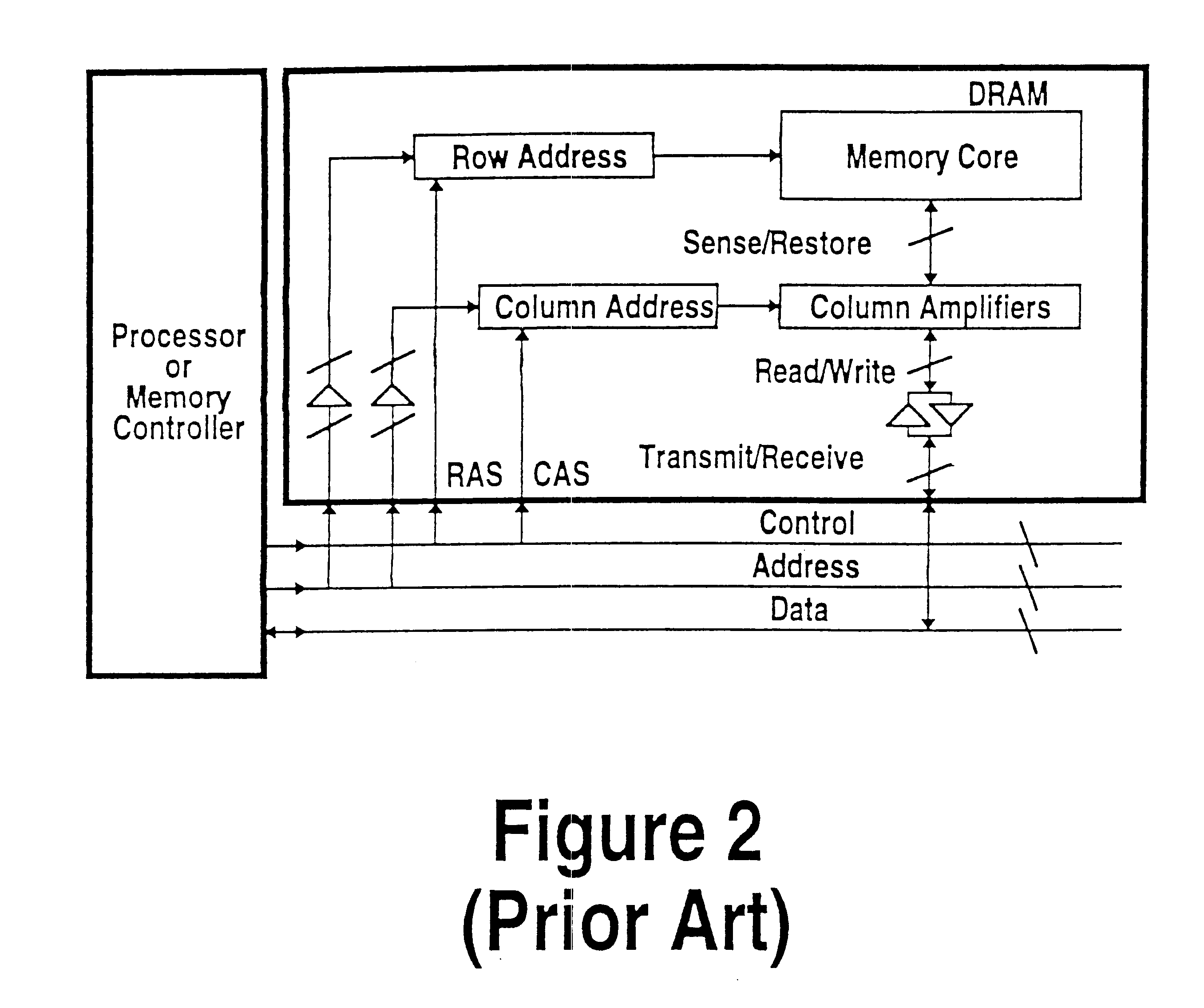Protocol for communication with dynamic memory
a dynamic memory and protocol technology, applied in the field of protocol for communication with dynamic memory, can solve problems such as dram architectures that deviate in varying degrees from conventional dram architectures
- Summary
- Abstract
- Description
- Claims
- Application Information
AI Technical Summary
Benefits of technology
Problems solved by technology
Method used
Image
Examples
Embodiment Construction
Explanation of Transaction Templates
1.0 Introduction
This appendix contains a transaction template that shows the information that is communicated over a channel and the internal DRAM core states that occur during a series of transactions.
Timing information proceeds down the template, with each horizontal row representing a clock cycle or two bus samples. Each row represents 4 ns at 500 MHz or 3.75 ns at 533 MHz.
1.1 Clk Cyc Column
The first column, labeled clock cycles, represents the time in clock cycles since the beginning of this template.
1.2 BE Column
The 2nd column labeled BE, is the state of the BusEnable pin during that clock cycle. BusEnable is only used to send serial addresses to the RDRAM.
1.3 BC Column
The 3rd column labeled BC, is the state of the BusCtrl pin during that clock cycle. BusCtrl is used to send request packets, strobe, terminate and wakeup information. During a request packet, this fields identifies the request number, so requests and data can be tracked, the re...
PUM
 Login to View More
Login to View More Abstract
Description
Claims
Application Information
 Login to View More
Login to View More - R&D
- Intellectual Property
- Life Sciences
- Materials
- Tech Scout
- Unparalleled Data Quality
- Higher Quality Content
- 60% Fewer Hallucinations
Browse by: Latest US Patents, China's latest patents, Technical Efficacy Thesaurus, Application Domain, Technology Topic, Popular Technical Reports.
© 2025 PatSnap. All rights reserved.Legal|Privacy policy|Modern Slavery Act Transparency Statement|Sitemap|About US| Contact US: help@patsnap.com



